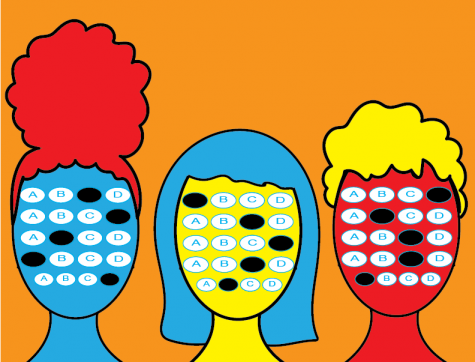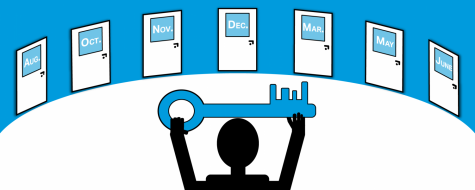Shreya’s Advice to Get a 1550+ on the SAT
The testing season just finished, and it was definitely different. I had to take my exams wearing a mask, while remaining socially distanced from everyone else. Despite this abnormal situation, I still had to take the standardized test and compete with students all over the world to get the highest score. After months of studying and preparing, these are my tips for taking the SAT. Also, as a fair disclaimer, these are the tips and techniques that worked for me; that doesn’t necessarily mean that it will work for everyone. Take everything here with a grain of salt. What ended up working for me doesn’t necessarily mean it will work for you.
Part I: What is the SAT
Almost every college requires an SAT or ACT score. These tests are meant to evaluate your readiness for college. That being said, even if you do score low, that shouldn’t damage your self esteem at all. Remember, it’s just a test. Luckily, you can always retake it and you can always improve. As Dr. Caraway says for the AP, it’s just a procedure. Once you learn test-taking strategies and master the procedure, it will no longer be challenging. While you should most definitely give the exam your best, remember that just because your score is low doesn’t mean you’re done for; think of it instead as a starting point from which you can excel.
Part II: When to Take the SAT
As most people would concur, I believe that junior or even sophomore year is the best time to take the exam. Personally, I would have loved to take the exam during the summer of junior year; however, due to COVID-19, the spots were reserved for seniors, and I didn’t want to jeopardize a senior’s chance to take the exam. Therefore, I took it in December. I will warn you that the exam was right before midterms, and studying for the SAT cut into the time I usually reserve for midterms.
Part III: How Keystone School Helps with the SAT
 Throughout your Keystone education, you’ll learn valuable skills that will help you improve your score. The majority of the math section is algebra, going as high as Algebra II. Taking AP Statistics is helpful for the one to two questions about statistics, especially knowing basic statistics terminology. Other than that, you will see one to two trigonometry questions, but if you already have an understanding of sine, cosine, and tangent from geometry, you should be set. By that logic, you would have learned all the math you need by the end of the first or second quarter of sophomore year.
Throughout your Keystone education, you’ll learn valuable skills that will help you improve your score. The majority of the math section is algebra, going as high as Algebra II. Taking AP Statistics is helpful for the one to two questions about statistics, especially knowing basic statistics terminology. Other than that, you will see one to two trigonometry questions, but if you already have an understanding of sine, cosine, and tangent from geometry, you should be set. By that logic, you would have learned all the math you need by the end of the first or second quarter of sophomore year.
For English, the reading section is purely comprehension, and the exact skills for this section are not really taught in Keystone. Honestly, it’s most similar to the reading comprehension in AP French or AP Spanish. However, for the Writing and Language section, Mrs. Elizondo drilled the necessary grammar in sophomore year. Once again, by the end of the second quarter of sophomore year, you should be equipped with the majority of the SAT grammar you will need.
In this article, I’m not going to talk about the essay in depth. The essay is optional and most colleges don’t look at it. If you plan to take the essay, it is a rhetorical analysis essay, which is similar to the essay you learn in AP English Language during the first semester of junior year.
Therefore, altogether, by the end of the first semester of sophomore year, Keystone would have offered all the lessons to aid you with the SAT. This does not mean Keystone doesn’t offer other forms of help: if you ever have a question about a problem or don’t understand a concept, the teachers are willing to look over the problem and help you with it. Never forget that the teachers are a valuable resource! However, by this analysis, an optimal time to take your SAT is after the end of your second semester of sophomore year. Add in a few months of review and studying, and perhaps the best time would be the August SAT.
Part IV: Where to Begin
Start by taking a test. You never know where you are until you take one. Next, pick up a book and learn critical testing strategies. Personally, I started with Kaplan, but you start wherever you’d like. One thing that I will warn you about is that not all books are the same. Some are way harder than the SAT, while others are easier, so don’t feel bogged down by a low score. Once you have the base of Keystone’s education, you just have to learn how to adjust to the exam and find where you need to adjust. Here, I’ll outline my advice for each section.
Reading
For this, pick a strategy that works for you and stick to it. Personally, I thoroughly read each passage through and annotate (if I encounter a difficult section, I don’t stop to comprehend it; rather, I continue through), then I answer the questions, constantly referring back to the text. I do this because I know the types of questions the SAT will ask me, so I know what to roughly keep an eye out for. However, other resources might say skim the passage or read the questions first. Whatever you decide is best for you, simply stick to it. I’d recommend you have a period in your test prep when you try different reading strategies and pick which one you prefer. Below is a breakdown of my strategies for each question type.
Writing
This section has two major question types: grammar and style. Through Keystone’s education, you will learn all the grammar. The stylistic questions were slightly more difficult for me, but eventually, it became logical. For this section, I strongly recommend The College Pandas’ Writing and Language book. This prep book walks through every question type and is complete with practice problems and lessons. After going through the book, you should have a complete knowledge bank for the writing portion. After this, when you start taking practice tests, copy all the questions you get wrong into a notebook, and practice those questions whenever you get a chance.
Math
Similar to writing, the majority of math is taught through Keystone. To review the concepts, Pandas Math can also be helpful. Once again, I’d recommend keeping a notebook with any questions you can wrong. Silly mistakes are the main killers in the math section, so it’s important to always double-check you are answering the right question. Two strategies for this section would be to use the answer choices! You can save a lot of time using the answer choices! Yes, although I know you can solve the entire problem yourself, sometimes it’s just more simple to use the answer choices, so use them! Second, for the calculator section, know how to use your calculator! If you can use solver to get the answer quickly, do that. Having gone through Keystone’s math program, I know you all can do well on the section: just make sure you pick the least time-consuming strategies and make sure you are answering the correct question.

Part V: Schedule and Practice Tests
Something that will help the most is taking full-length practice exams. Trust me, at the start of your test prep, a three-hour-long exam is tiring and that tiredness can easily diminish your performance. Therefore, practice tests will help you build up stamina and perseverance, along with the benefit of gauging where you struggle. The best book for practice tests is SAT’s Blue Book, which is full of real SAT exams. Note that other testing companies typically make their exams harder than the actual SAT; this book provides tests that will gauge your performance. After every practice test you take, review! I believe there are two major stages of revision: knowledge errors and fine-tuning. For knowledge errors, if you realize you’re missing many, for example, geometry questions, you have located a topic you need to revise. The best way to revise a certain topic would be the books mentioned above or CrackSat. For fine-tuning, this is the stage in which you need to know a small rule, like the difference between compliment and complement or sin(x)=cos(90-x). For this, the notebook of mistakes will help! Remember, to get a perfect or near-perfect score, every single point will count! For reading, often reviewing different types of passages will be helpful. You can find over 100 reading passages on CrackSat and several target tests. I’d strongly recommend you look at those for solid practice.
The Day of Exam
You’ve been studying for months, maybe years, and the day has finally come for you to execute. Can you do it? Everything on this day is critical, so treat yourself to be able to perform at your maximum. For me, I had to run in the morning and made sure to move during every break and usually eat some of my snacks. The moving, the drinking water, and everything helped me perform my best on my exam. Whatever works for you, do it, even if you need to experiment to figure it out.

Shreya Chaudhary is a senior planning to major in data science or computer science. She interns with TigerGraph, promotes and tutors women in STEM through...


Ali Wu • Feb 12, 2021 at 4:59 pm
shreya = smartest person in the world :O